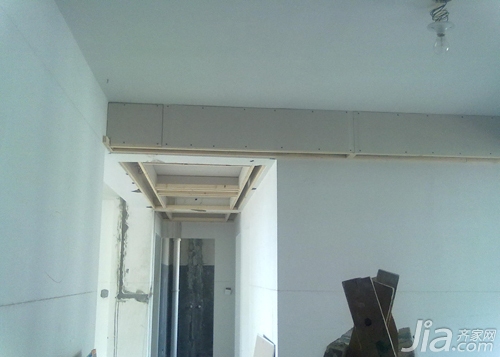
Ceiling Acceptance Specifications
First, the Metal Ceiling Project Acceptance Specification
This specification applies to all types of metal plate ceilings, including strip plates, square plates, and grilles. It outlines the necessary criteria for quality control and ensures that the installation meets industry standards.
The number of inspections is set at 20% of the total number of items for random sampling. This helps in identifying potential deviations early in the process.
1. Mandatory Items
2. Basic Items
Second, the Specification for Plasterboard and Wood Plywood Ceiling Inspection
This standard also applies to various types of metal plate ceiling projects, ensuring consistency in quality across different materials. The inspection process follows similar guidelines, with 20% of the items randomly checked for compliance.
1. Mandatory Items
2. Basic Items
Ceiling Acceptance Procedure
First, Concrete Base Without Ceiling
1. Follow the construction sequence as per project requirements.
2. Ensure the base is clean, solid, and free from voids or hollow sounds.
Second, Wooden Ceiling
1. Follow the correct construction sequence.
2. The wooden framework should be free of knots, with strong and secure connections. The suspension rods must be firmly attached to both the wooden keel and the floor structure.
Third, Board and Wire Mesh Plaster Ceiling
1. The wooden grid layout should follow the same requirements as for a wooden ceiling.
2. The slats should be staggered, and the surface should not show light through the gaps. Boards and wire mesh should be securely nailed in place.
Fourth, Light Steel Keel Ceiling
1. The selected light steel keels must meet design specifications to ensure structural integrity and durability.
2. All components and ceilings should be galvanized to prevent rust and corrosion over time.
Ceiling Acceptance Criteria
This criterion applies to the installation and acceptance of ceilings where wooden, light steel, or aluminum alloy frameworks are used, along with various cover panels such as gypsum boards, plywood, glass, and PVC buckle boards.
1. The type, size, color, basic structure, and fixing method of the materials must conform to the design requirements.
2. All keel-based ceilings must be securely fastened. After installation, a full inspection and leveling should be conducted, and the installation position must be verified.
3. The wood specifications used in the wooden frame should meet the design requirements. Each piece of wood should be glued before nailing, and the side in contact with the cover panel must be planed for a smooth finish.
4. The wooden frame structure must comply with fire safety regulations.
5. The cover panels should have no bubbles, peeling, cracks, missing corners, dirt, or pattern defects. The surface should be smooth, edges neat, and the color consistent.
6. The perforated plate holes should be neatly arranged. For glued concrete and wood fiberboard, there should be no delamination, discoloration, or decay.
7. When using nails to fix materials like plywood or medium density fiberboard, the nail spacing should be between 80–120 mm, with a length of 25–35 mm. The nail heads should be flat and slightly embedded into the board (0.5–1 mm), followed by filling with oil-based putty.
8. When applying varnish to a veneered surface, the wood grain and color of adjacent panels should be similar for a uniform appearance.
9. When stenciling or brushing the cover panel, the joints should be treated with white latex and wiped with a fine cotton cloth. The seams should overlap by at least 5 cm on both sides for a seamless look.
Related Reading:
Three Key Points to Understand the Integrated Ceiling Installation Method
Ceiling construction, acceptance, living room ceiling, glass paint, aluminum alloy
DSJH-Type Petrochemical Process Pump
Petrochemical Process Pump,Centrifugal Petrochemical Pumps,Petrochemical Industry Pump
Shenyang pump products sales co., LTD , https://www.syipsc.com